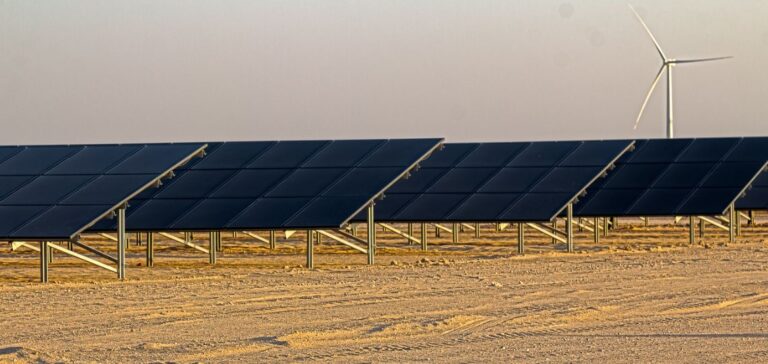KBR has won a strategic consultancy contract with Kuwait Oil Company (KOC) to develop a national master plan to produce 17 GW of renewable energy and 25 GW of green hydrogen by 2050. The project is part of Kuwait’s long-term energy strategy to diversify its energy sources and reduce its carbon footprint. In addition, the country’s hot weather forced it to ration its electricity. Thus, a diversification of the Kuwaiti energy mix could improve the management of this kind of situation in the future.
Energy strategy and objectives
The 18-month contract includes consultancy services for the development of a phased strategy for the mass deployment of wind and solar power, as well as energy storage capacities. The main objective is to link this renewable energy production to the generation of green hydrogen for domestic industrial use and export.
This initiative is part of the global energy transition, in which Kuwait aims to play a leading role by using its natural resources to produce clean energy. KBR will also be responsible for carrying out technical and commercial feasibility studies and training Kuwaiti nationals.
Challenges and prospects
The energy transition represents a major challenge for many countries, including Kuwait. Implementing this masterplan will require close coordination between the various players in the energy sector, as well as adaptation to technological developments and market requirements. Producing 25 GW of green hydrogen by 2050 will require massive investment and the development of new infrastructures and local skills.
This project could position Kuwait as a regional leader in clean energy production, while creating significant economic opportunities through job creation and the development of national skills. Moreover, by exporting green hydrogen, Kuwait could diversify its sources of revenue and reduce its dependence on hydrocarbons.
KBR’s collaboration with Kuwait Oil Company on this project illustrates the importance of international expertise in achieving energy transition objectives. This project marks an important milestone in Kuwait’s energy transformation, underlining the country’s efforts to adapt to the global dynamics of sustainability and carbon emission reduction.






















